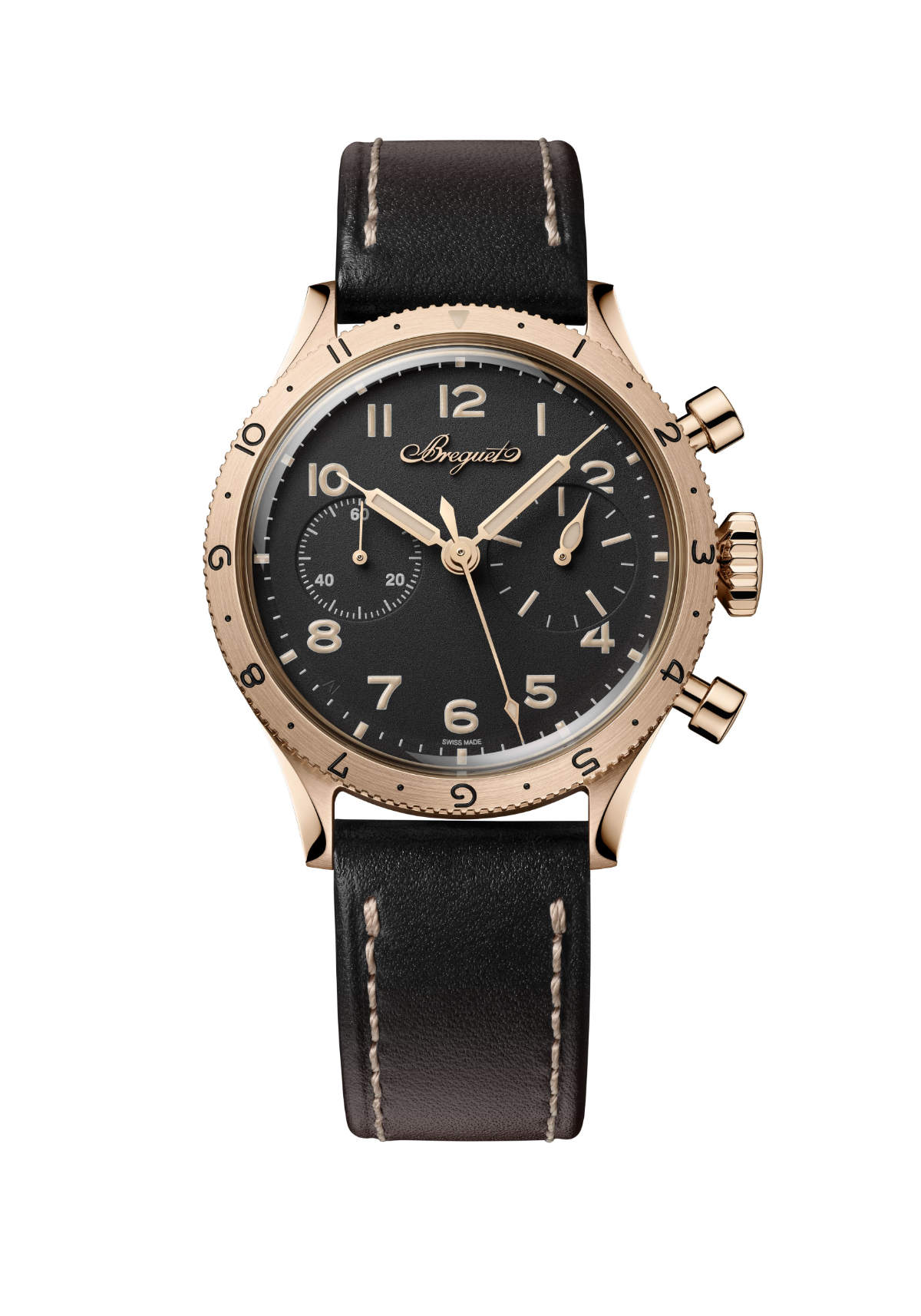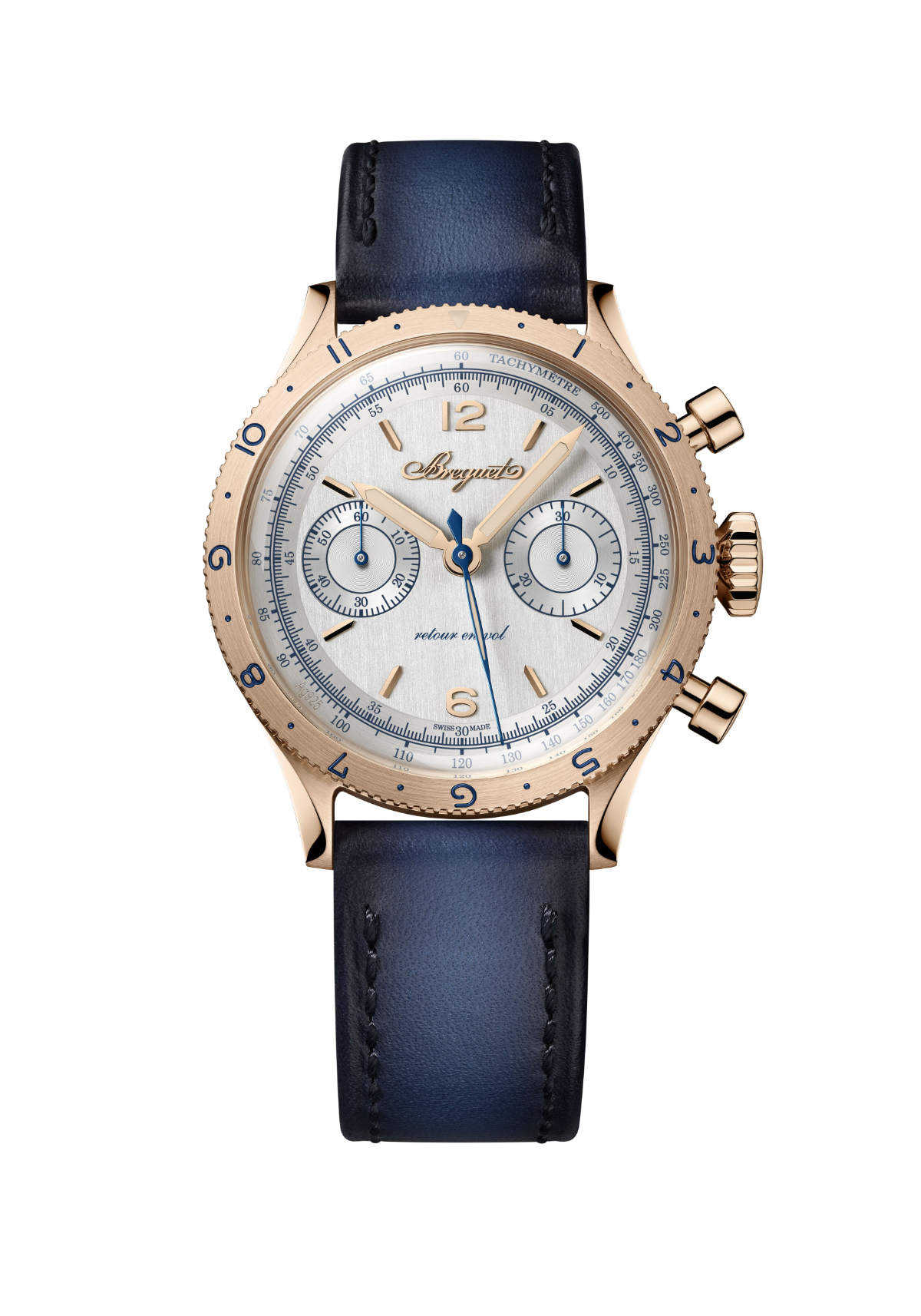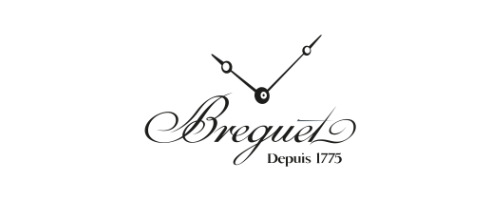Breguet Brand
Breguet Introduces Its New Type XX Chronographe 2075 Watch
Luxferity, 22.06.2025

As part of its 250th anniversary celebrations, following Paris with the Classique Souscription 2025 and Shanghai with the Tradition 7035 edition, Breguet is making a stopover in New York. Here it presents the Type XX Chronographe reference 2075 in two versions, inspired by an emblematic model dating back to 1955.
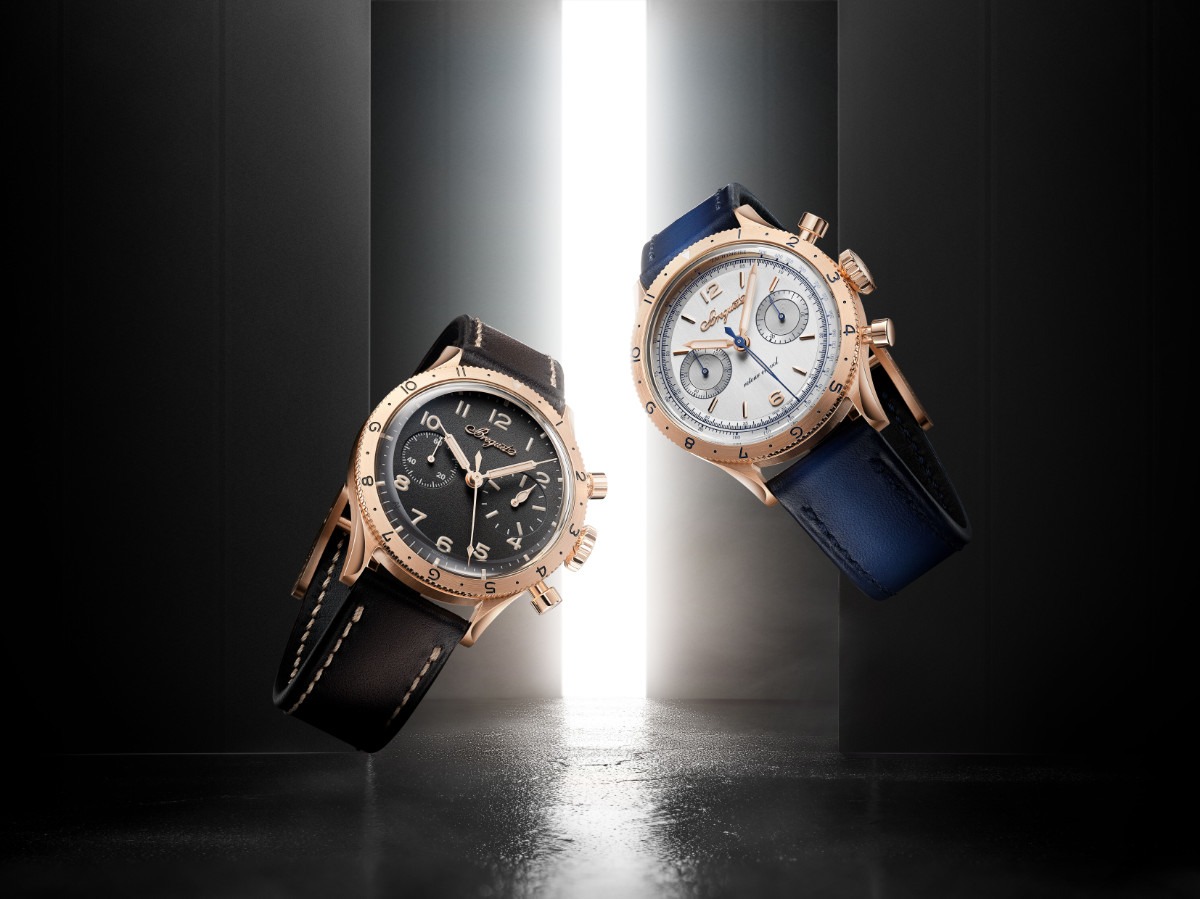
These new chronographs with flyback function pay tribute to the human genius and courage of the explorers of time: Abraham-Louis Breguet, the watchmaker who founded the eponymous company; Louis Breguet, his great-great-grandson, an aircraft manufacturer; and the aviator duo Dieudonné Costes and Maurice Bellonte, the first people to fly from Paris to New York. They achieved this feat in just over 37 hours from the 1st to the 2nd of September, 1930.
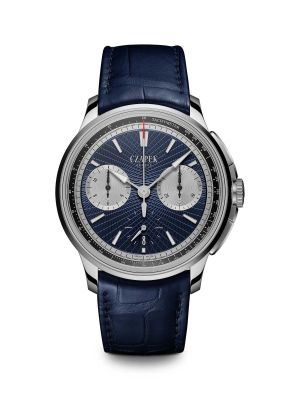
Crossroads Deep Blue

Their plane, a Breguet 19TR Super Bidon - a name chosen because of its large fuel tank - was decorated with a large question mark on either side of its fuselage.
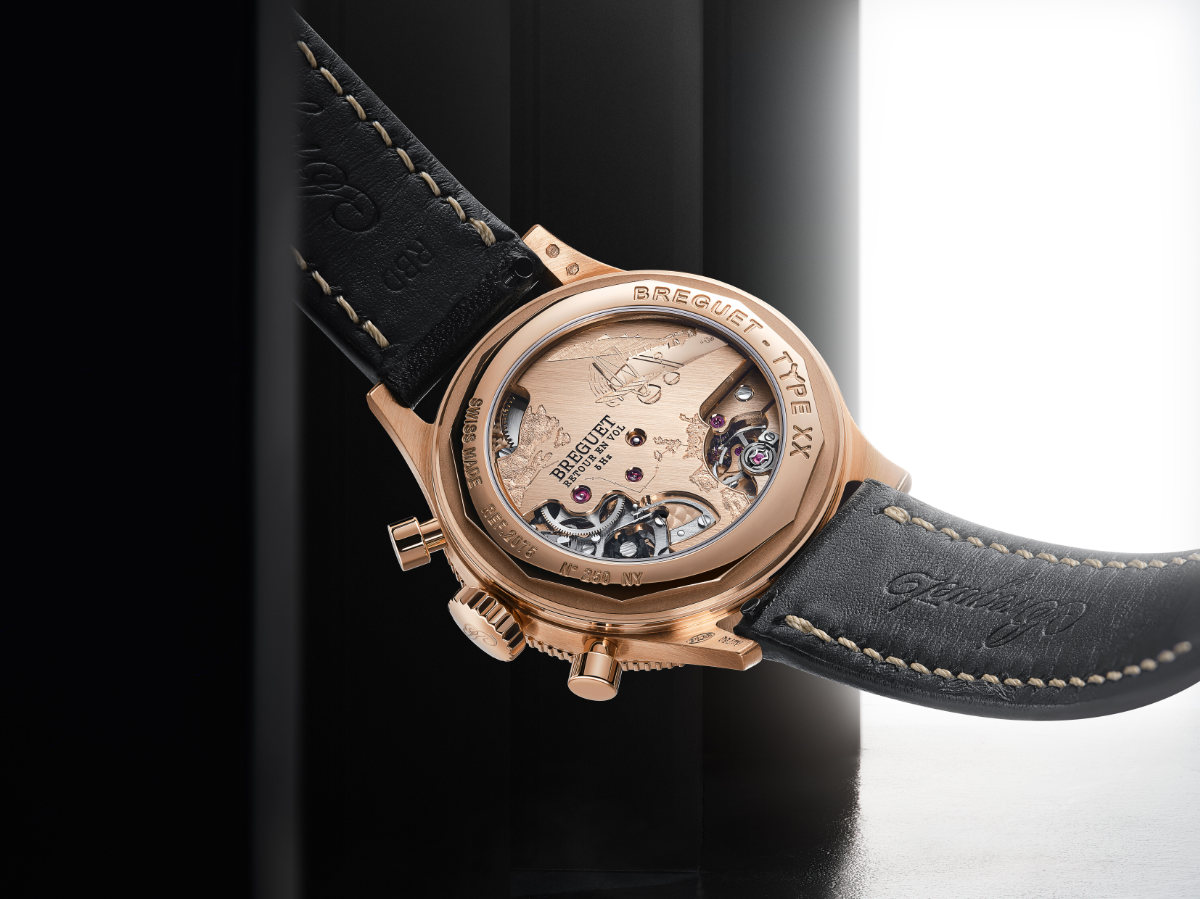
These two new timepieces, crafted in Breguet gold, an exclusive alloy with blond highlights, feature either an aluminium dial anodized in black, or a solid silver dial. They draw their inspiration from an emblematic “civil” timepiece that Breguet presented in 1955, it bears the individual serial number 1780. As such, they proudly reflect Breguet’s spirit of technical innovation as well as its continuing respect for its own history.
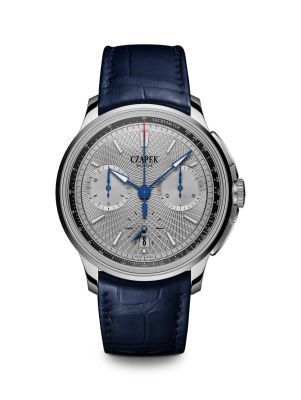
Crossroads Secret Alloy

Breguet, a name synonymous with inventiveness
While A.-L. Breguet (1747-1823) had unlocked the gates of time, enabling watchmaking to make major advances, his greatgreat- grandson Louis Breguet (1880-1955) opened wide those of the sky.
An engineer with a degree from the École Supérieure d’Électricité, this pioneer set up his own aviation company. Over more than fifty years he developed cutting-edge biplane and then monoplane aircraft, including the famous Breguet 19, a bomber and reconnaissance aircraft widely used for long-distance flights.
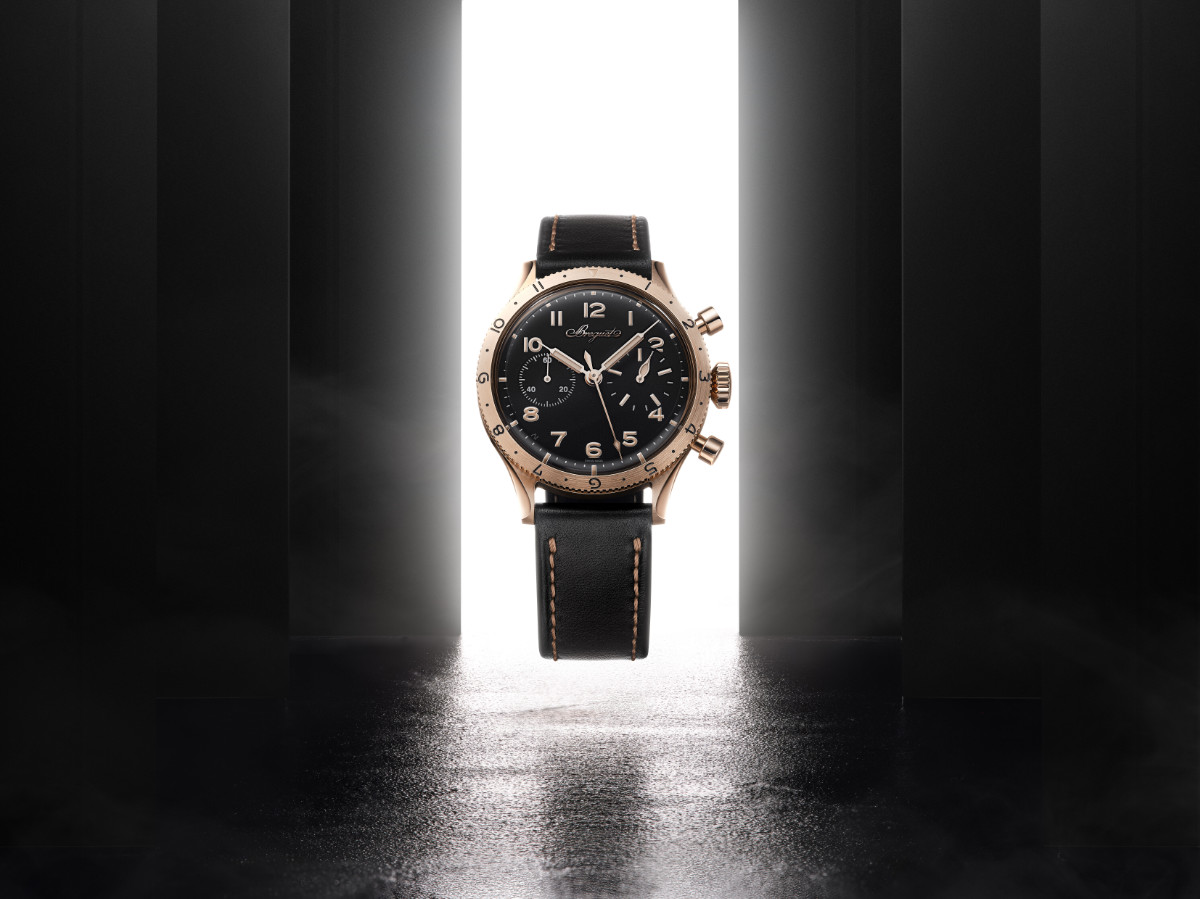
First Paris-New York flight on a “questionable” aircraft
Following the solo flight from New York to Paris by the American Charles Lindbergh (1902-1974) in 1927, there was much speculation about the possibility of flying the other way: from Paris to New York. When asked by the press about the likelihood of success of such a mission, Louis Breguet and the aviators Dieudonné Costes (1892-1974) and Maurice Bellonte (1896-1984) simply answered with a question mark.

Plissé - Pearl White

Their specially adapted Breguet 19, the Super Bidon “Point d’Interrogation” featured a large, white question mark on either side of the red fuselage. However, despite their own, and others’, doubts about the feasibility of such a journey, they succeeded in flying non-stop between the two metropolises in 1930.
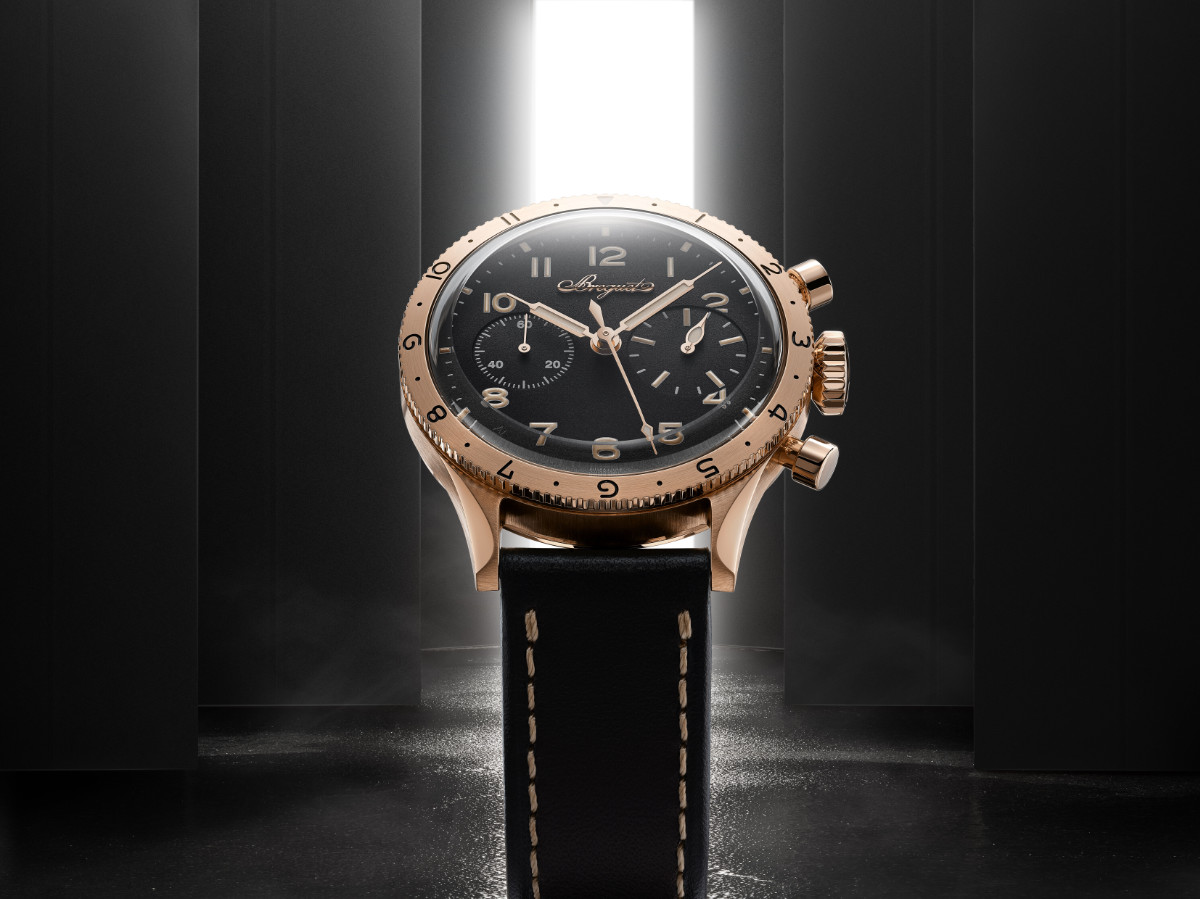
"These new Type XX timepieces, with their smaller diameter and hand-wound movement, venerate the design codes of the original models." - Gregory Kissling, CEO
Type XX, the legend of the skies
In the early 1950s, the French Air Force invited tenders for a chronograph wristwatch for its pilots, which it codenamed Type 20. One of the winning companies was Breguet, which would supply the aviation world with several timepieces meeting these specifications.
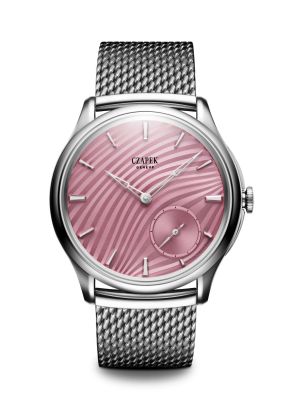
Plissé - Rose

The year 1952 saw the birth of the Breguet instrument-watch: there were two military versions, the Type 20 for the Air Force and the Type XX for the Naval Aviation, as well as numerous Type XX variants created for the civilian market.
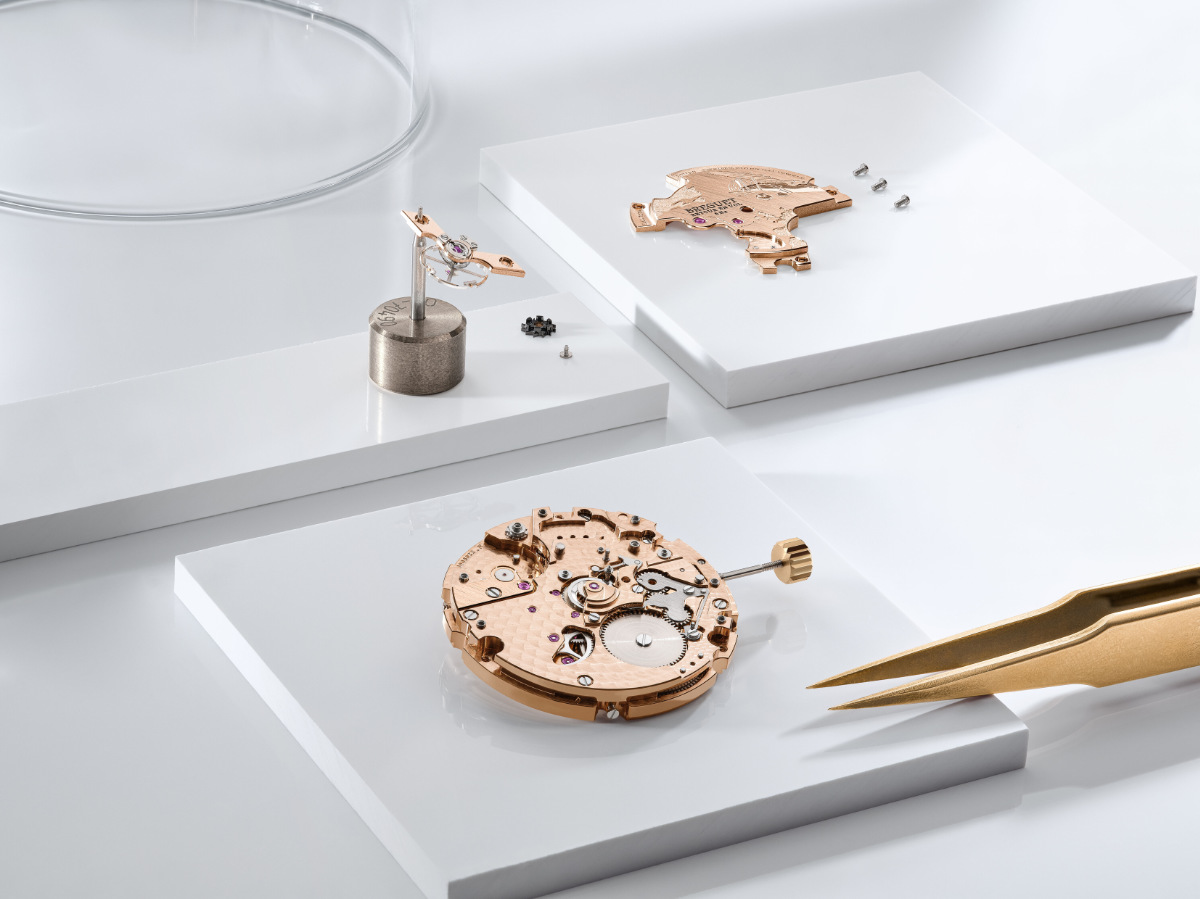
Inspired by this part of its history, Breguet introduced its own Type XX line into its current collections, with the 4th generation seeing the light of day in 2023. To continue this fascinating story, and to celebrate the company’s 250th anniversary, Breguet presents the Type XX reference 2075, available in two versions.

Plissé - Ivory

A civilian model in gold, presented in 1955, provides the inspiration. According to the archives, this timepiece originally sported a satin-finish silver dial, which was later replaced by a black dial.
Today, Breguet is offering two reinterpretations: one with a black dial in aluminium, and the other, limited to 250 pieces, with a solid silver dial. A natural continuity between past and present.
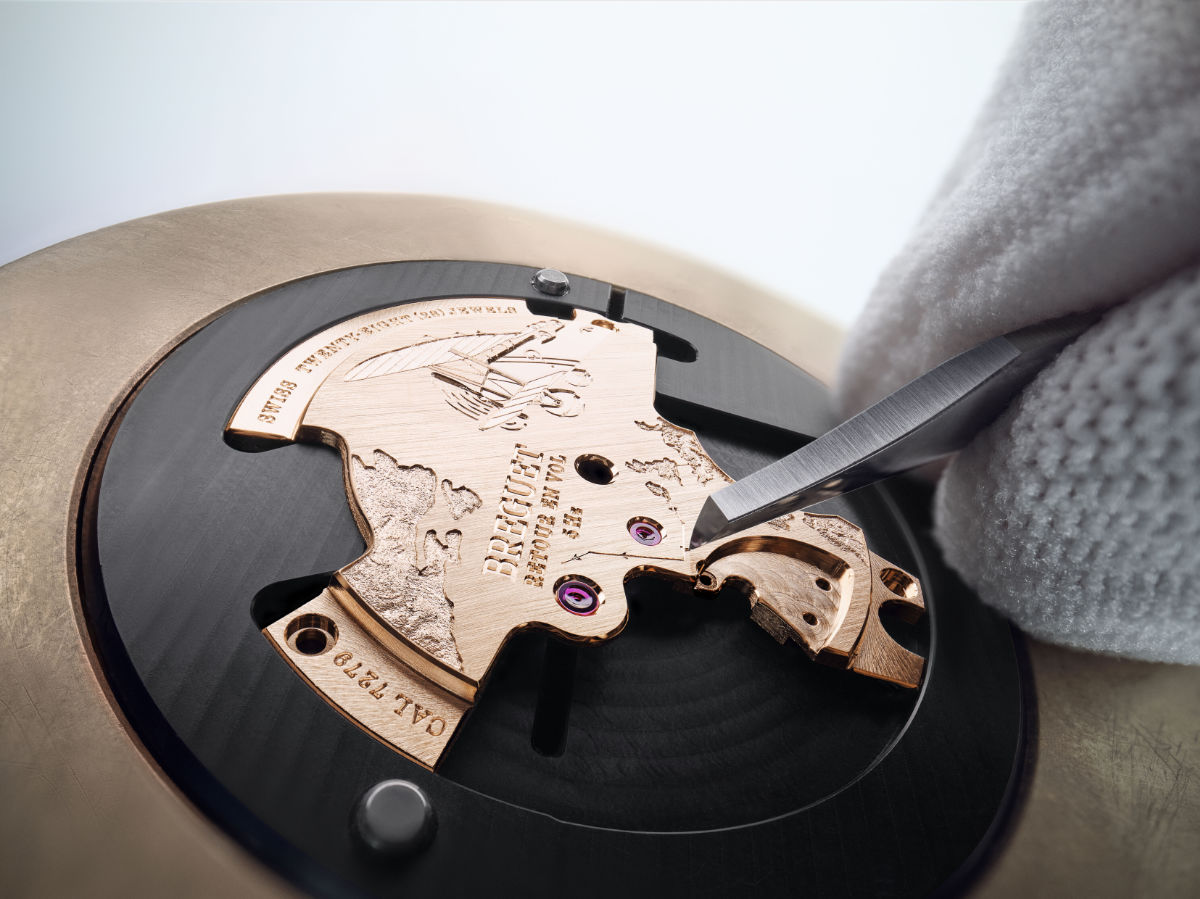
A high-performance engine
The calibres housed in these two models are variations of the high-performance, 5 Hz calibre 728 introduced by Breguet in 2023. They incorporate the flyback function that allows the watch to be reset to zero and a new count instantly started by a single press of the pusher located at 4 o’clock.
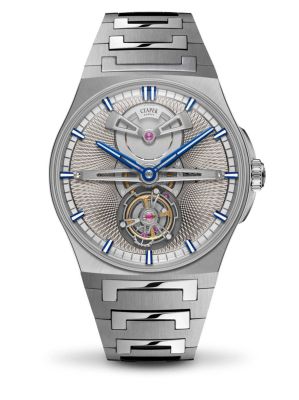
Secret Alloy

These two new models feature, for the first time, manually wound versions of the Breguet calibre 728, which are gilded in Breguet gold. The calibre 7279, for the black-dialled version, has a 15-minute counter at 3 o’clock, while the calibre 7278, for the silver-dialled version, has a 30-minute counter also at 3 o’clock. Both models have a small seconds display at 9 o’clock.
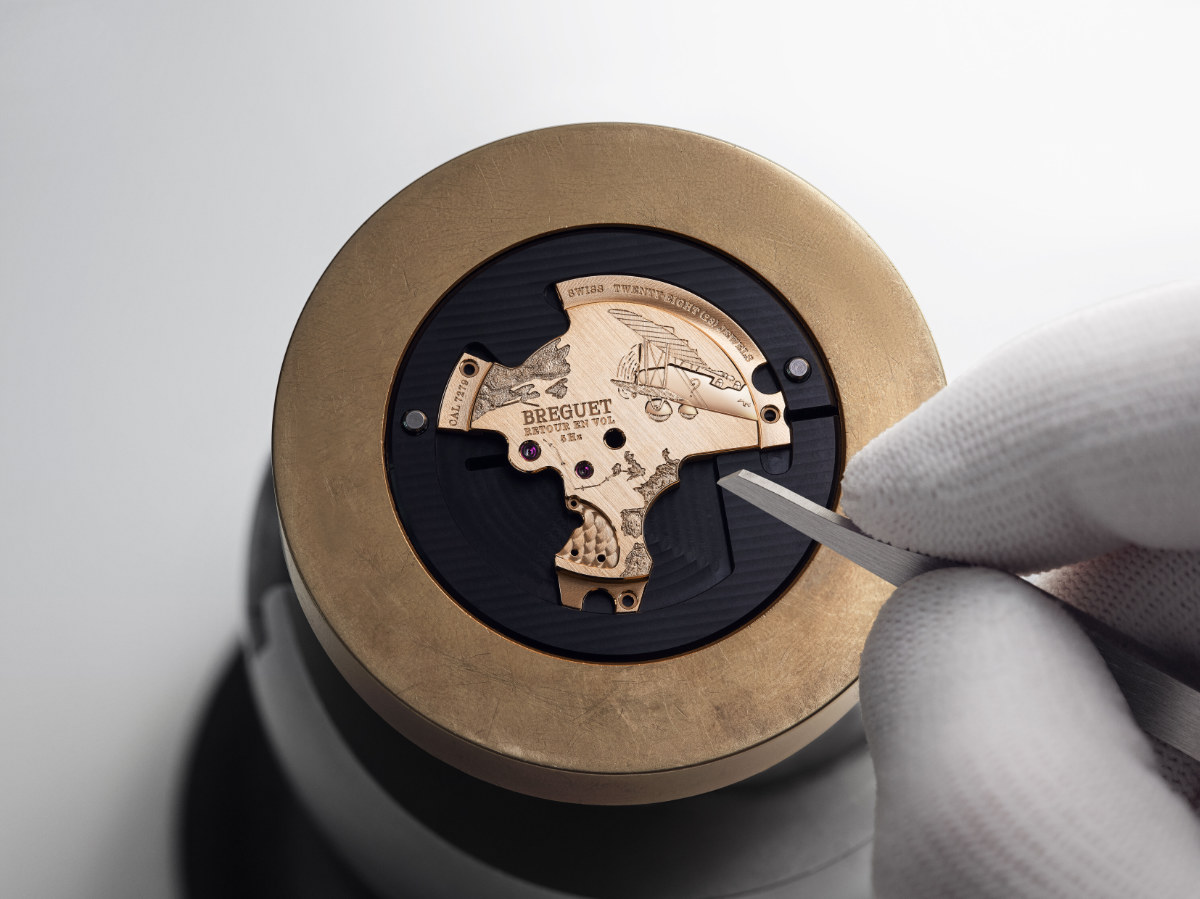
The transparent case back reveals an engraving entirely hand-crafted in the company’s workshops. It depicts the Breguet 19 aircraft in full flight accompanied by the precise route taken in 1930, the European and North American landmasses’ frosted finishing contrasts against the smooth Atlantic Ocean.

Secret Alloy

Two dials, one heritage
In tribute to the genius of Louis Breguet, who pioneered the use of Duralumin (an alloy containing 95% aluminium) sheet metal for his aircraft, Breguet has chosen to equip its Type XX 2075 with a dial made from this material, a first in its collections. A discreet “Al” between 7 and 8 o’clock confirms the use of this metal.
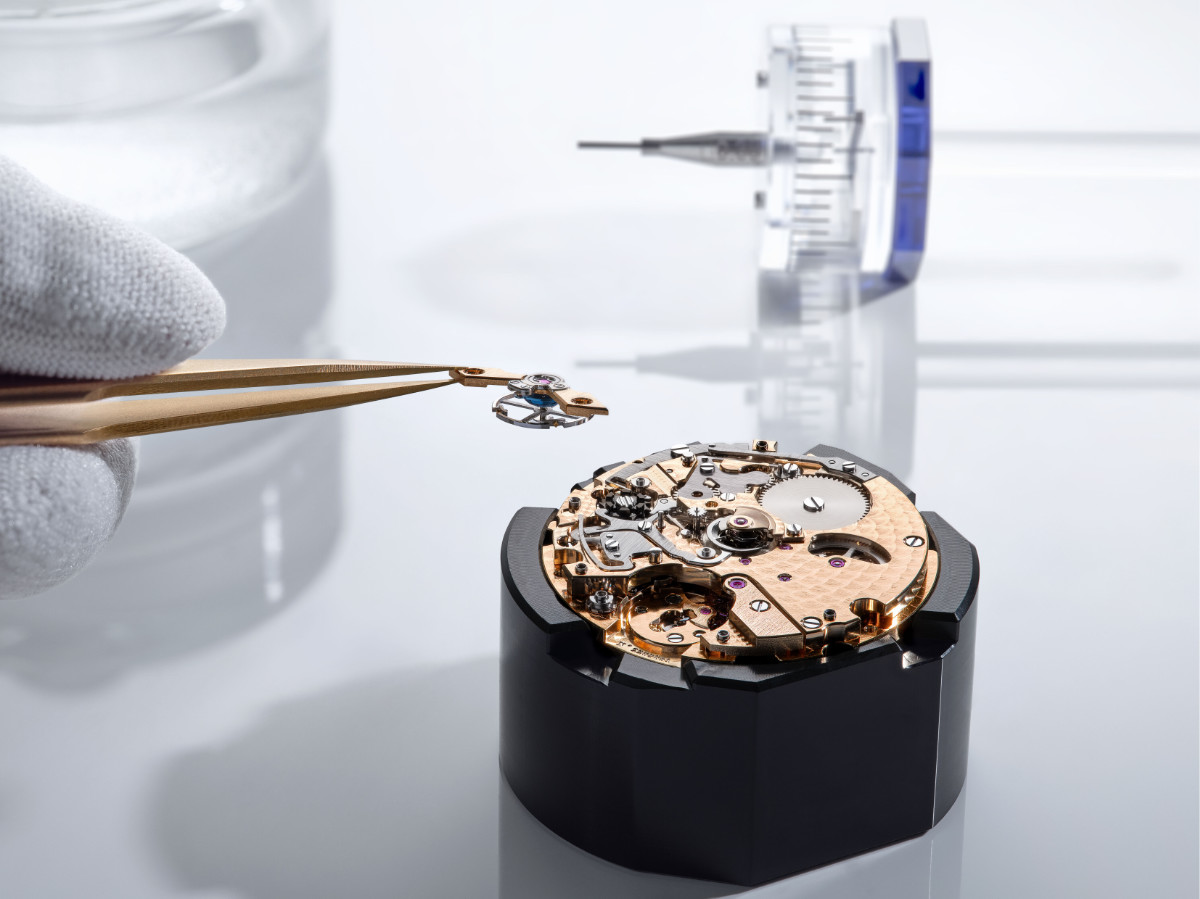
To obtain a black hue close to that of the historic 1955 model, Breguet uses anodisation, a process that consists of creating a thickened layer of oxidation which provides protection against corrosion. For this treatment, Breguet uses the latest innovations in the field: a deep black anodising with high mechanical resistance, currently used in the aerospace industry. This results in enhanced legibility and durability.
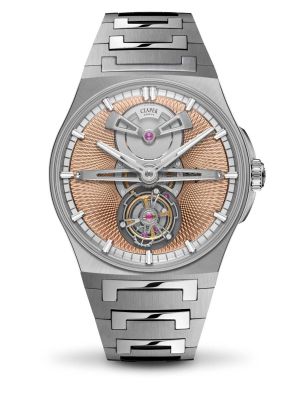
Photon Sphere

The other version of this new Type XX is also faithful to the historic N°1780 timepiece, this time as it was originally produced: with a silver dial.
On this model, the solid silver dial, presented in a vertically brushed finish, offers an understated and sophisticated brilliance, underlining the timeless elegance of the watch.
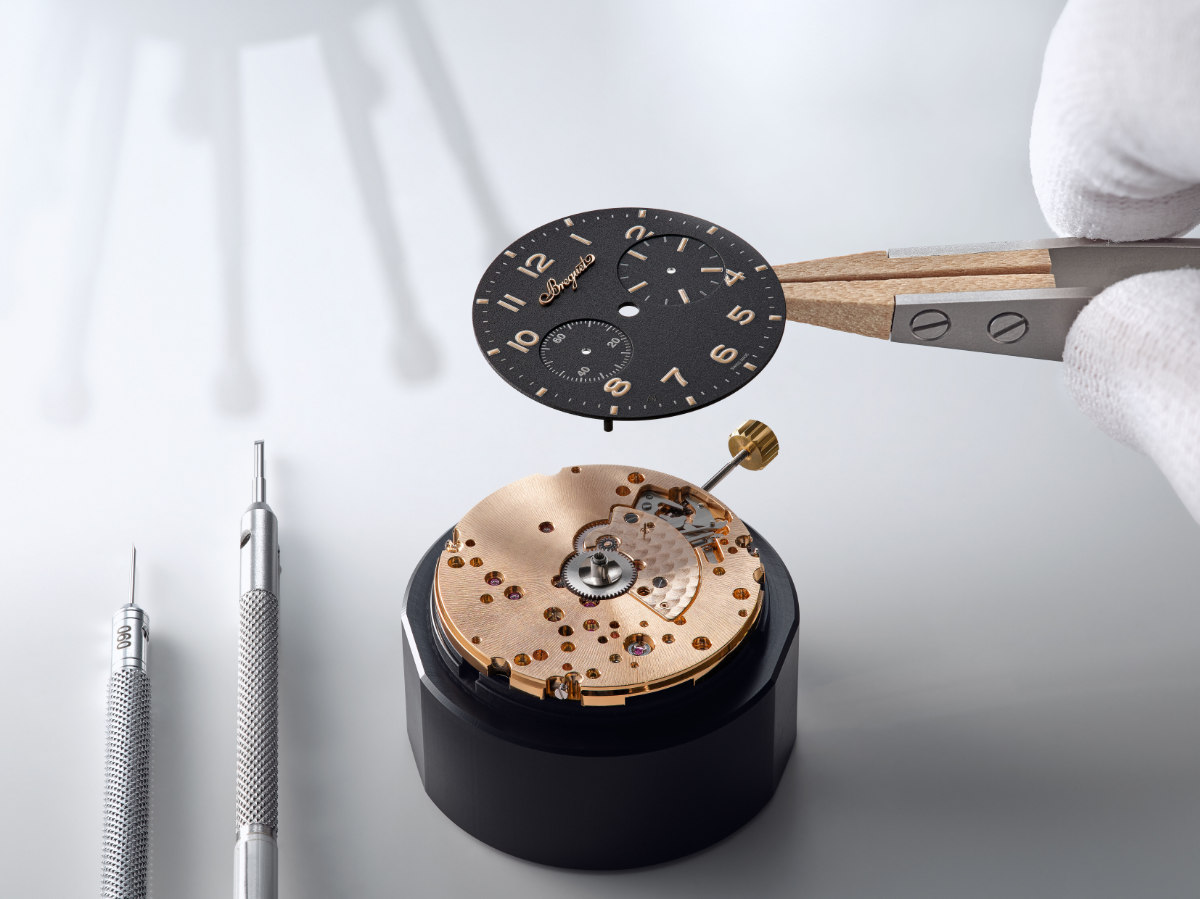
A subtle “Ag925” marking nestles between 7 and 8 o’clock, a discreet reminder of the precious metal that lies beneath. This version is also distinguished by the presence of a tachymeter, a scale for measuring speed based on the time taken to travel a certain distance.
Both dials feature the extremely fine and delicate, applied Breguet name in Breguet gold. The silver version’s dial has applied Arabic numerals and hour markers, equally in Breguet gold.

Photon Sphere

A Breguet gold case
With a diameter of 38.3 mm, identical to the historic 1955 timepiece, and a thickness of 13.2 mm, the case is crafted entirely in Breguet gold. A combination of gold enriched with silver, copper and palladium, this signature gold alloy was unveiled at the launch of the Classique Souscription 2025 watch.
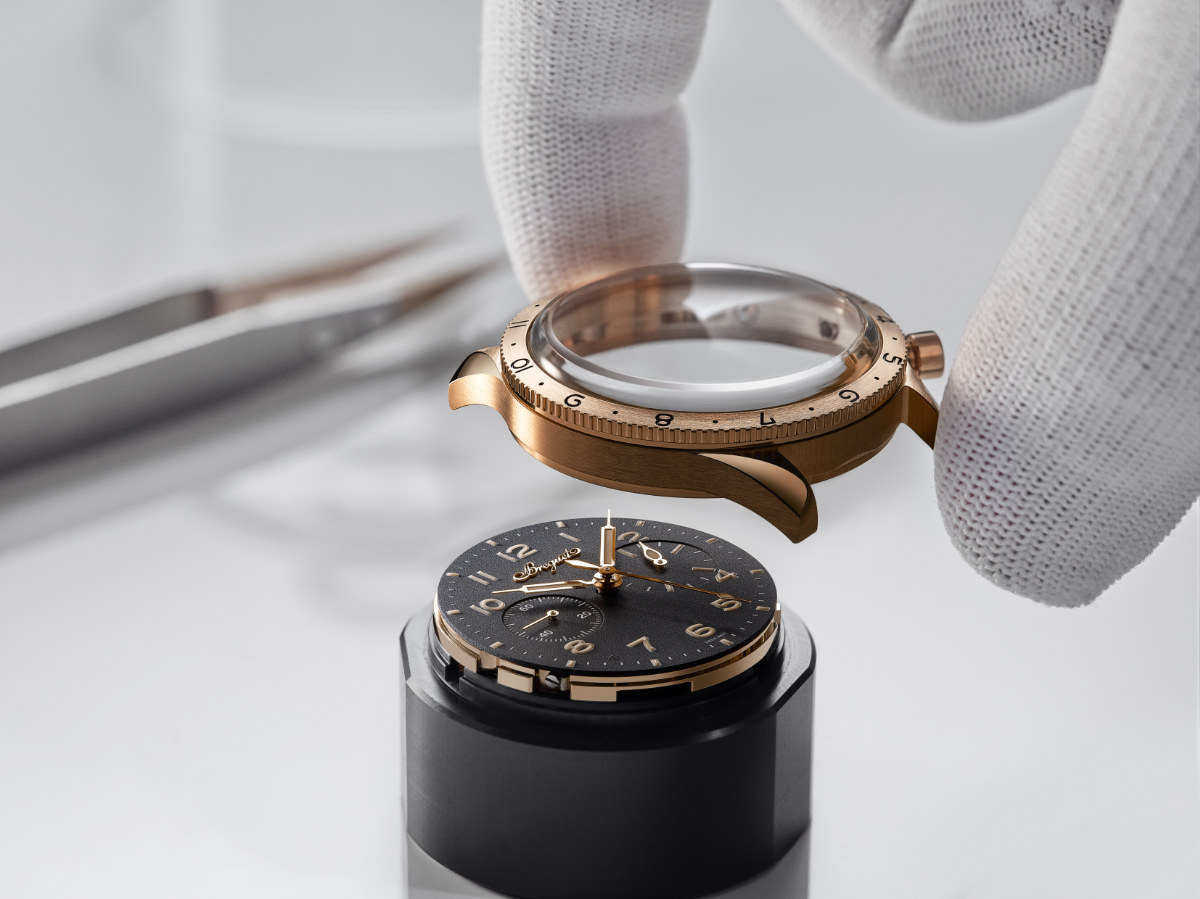
The slim, bi-directional rotating bezel has numerals picked out in black for the black-dialled version and in blue for the silver-dialled version. The crown proudly bears the B of Breguet.
Both new models feature an interchangeable leather strap, gradient black for the black dial version and gradient blue for the silver dial version.
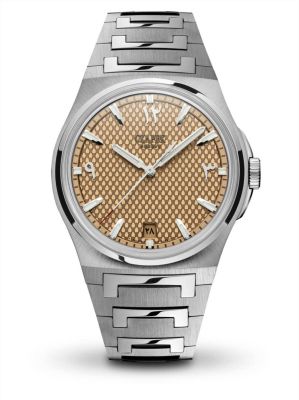
Passage de Drake Sahara Sands

Breguet and aviation
If the name Breguet evokes watchmaking excellence, it also resonates with the history of aviation. Heir to a bloodline of inventors, Louis Charles Breguet (1880-1955), greatgreat-grandson of the famous watchmaker Abraham-Louis Breguet, was one of the pioneers of French aviation.
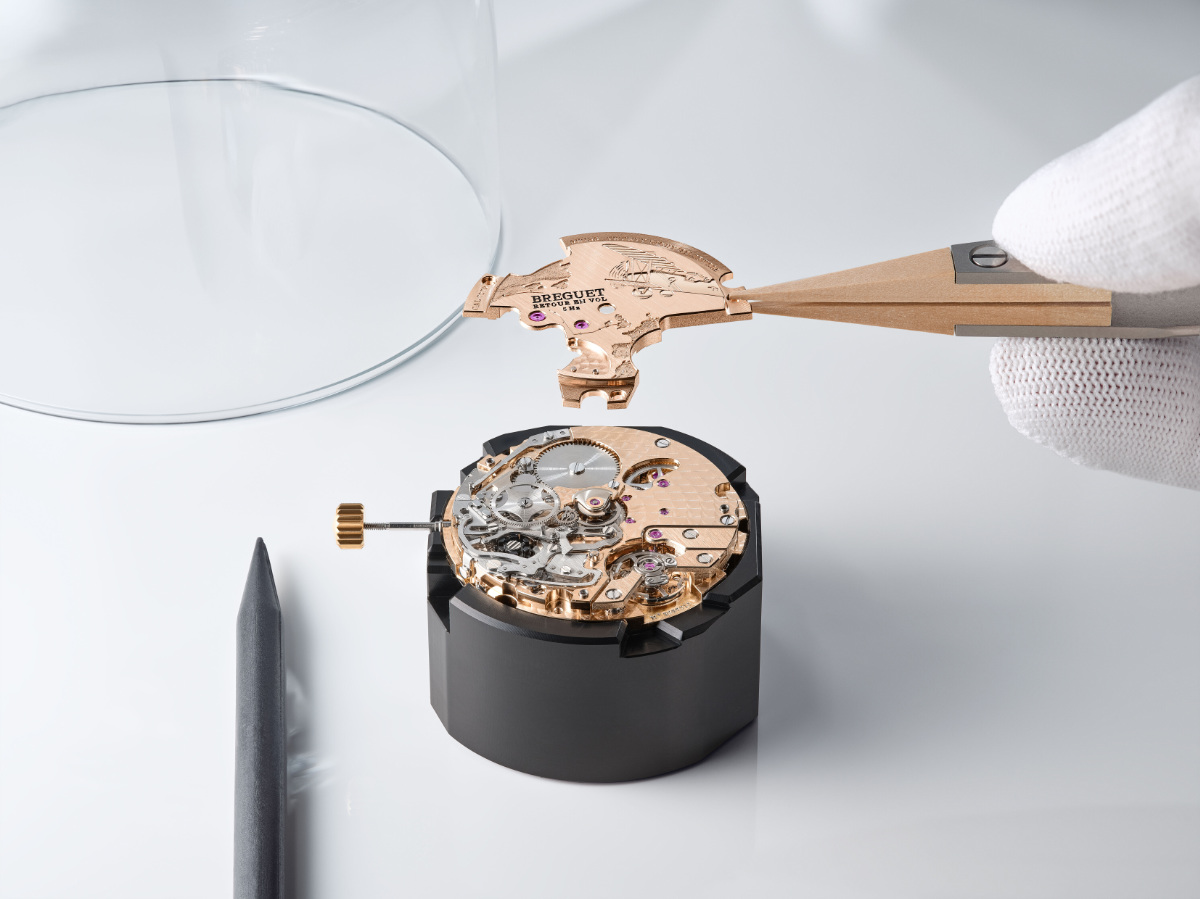
At the beginning of the 20th century, driven by a passion for mechanics and flight, Louis Breguet designed one of the first experimental helicopters: the gyroplane (1907), capable of leaving the ground with a passenger, a technological feat for its time. He went on to found Breguet Aviation, which would play a leading role in the development of military and civil aviation.
During the First World War, its aircraft - notably the Breguet XIV, the legendary reconnaissance and bombing biplane - were produced on a large scale and acclaimed for their performance. In the post-war period, Breguet became involved in commercial aviation and played an active role in the development of a new world of air transport.
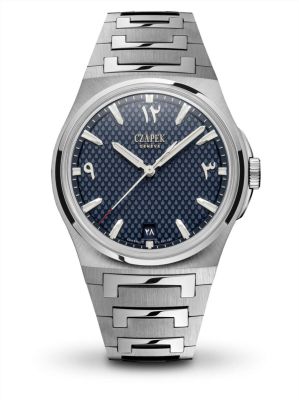
Passage de Drake Sahara Night

A visionary and a man of action, Louis Breguet also contributed to the creation of Air France. His name is inextricably linked with this seminal period, when man defied the skies with daring and elegance.
Interview with Gregory Kissling, CEO of Breg
- Why launch two new gold Type XXs in 2025?
These strong timepieces celebrate several elements. First and foremost, in 2025 we celebrate the 70th anniversary of the first gold Type XX. Breguet actually produced 3 of them in 1955, with yellow gold cases. Quite original for aviation timepieces normally made of steel! A few years ago we were able to acquire one of these models at auction for our museum collection.
The choice of a 38.3 mm diameter and manual winding is certainly
no coincidence…
We wanted to get as close as possible to the original model, and these elements were part of that. So, we’re presenting two products aimed at purists, connoisseurs of the Type XX, who are looking for a worthy heir to the models of the 1950s.
- Why launch these models in New York?
Paris had already been linked by air from New York in 1927, but the first plane to fly from Paris to New York was an authentic Breguet, in 1930. And we know that flying from east to west remains significantly more difficult because of headwinds. The aircraft that contributed to this success had made its first flight in 1929.
- How important is the Type XX line in the Breguet collections?
The Type XX line occupies a special place in Breguet’s collections. Born from a rich history linked to aviation, it bears witness to the House’s technical expertise in the field of chronographs. For the Type XX models, particular attention has been paid to historical design codes in order to harmoniously complement the House’s collections, and equally to appeal to a public with a passion for watchmaking and history.
- Is this a collection that will change over the next few years?
Absolutely. Having introduced models in steel and gold, which can be worn with a wide choice of straps or bracelets, the possibilities are far from exhausted, especially as the collection is aimed at such a large audience. The possibilities are still very broad, particularly in terms of diameters, finishes and materials. The collection will therefore continue to gradually evolve.
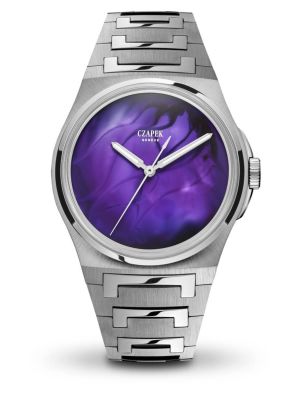
Purple Storm

Interview with Emmanuel Breguet, Head of Patrimony
- What is the link between Montres Breguet and the world of aviation?
Since its beginnings, the House of Breguet has been attentive to the needs of the aviation world, faithful to its tradition of accompanying major technical advances. Having designed watches for maritime navigation, it was only natural that it should turn its attention to air navigation.
Moreover, it should not be forgotten that one of the great pioneers of aviation, Louis Breguet - a direct descendant of A.-L. Breguet - had become a very important and renowned aircraft manufacturer. Although the Breguet family had sold the watch brand, links remained between the two worlds.
It is therefore highly likely that Louis Breguet played a key role in raising the company’s awareness of aviation issues, thereby helping to initiate this fruitful rapprochement.
- What became of Louis Breguet’s aviation company?
Breguet Aviation, founded by Louis Breguet in 1911, has left its mark on the history of French aviation and that of many other countries. A pioneer in the development of both military and civil aircraft, Breguet made its mark with the Breguet 14 during the First World War, followed by innovative aircraft such as the Breguet Deux-Ponts and the Breguet 941.
In 1971, Breguet Aviation merged with Dassault to form Avions Marcel Dassault-Breguet Aviation. The name “Breguet” disappeared in 1990 when the company name was simplified to Dassault Aviation. Although the company has ceased to exist as such, its spirit of innovation lives on in the French aeronautics industry.
- Does the Breguet XIX aircraft still exist?
Yes, it is now on display at the Musée de l’Air et de l’Espace at Le Bourget, Paris, where it has been since 1937. It is one of the highlights of this rich museum.
- What is the origin of the flyback function?
Requested by the official aviation authorities in the 1930s and 1940s, this function, which is not a Breguet invention, has been fitted on all Type XX chronographs since 1954, as well as various models of chronographs for aircraft instrument panels.
Appreciated by pilots as a real time-saver, the flyback function enables the chronograph hand to be reset to zero by simply pressing the lower pusher. The chronograph hand then immediately starts counting again from zero. Without the flyback function, three manipulations would be necessary for this operation.
- The Eiffel Tower has the names of French personalities engraved on its structure, including Breguet. Is this a reference to Abraham-Louis or Louis?
Neither! The name Breguet on the Eiffel Tower refers to Louis-Clément Breguet (1804-1883), a watchmaker and physicist who pioneered a telegraphy system and the uses of electricity, which was an emerging technology at the time. He was both Abraham-Louis’s grandson and Louis’s grandfather!
